The island of Lamu, Kenya lies on the Kenya’s northeastern coast within the Lamu Archipelago, a string of islands that reaches into the Indian Ocean. The small town of Lamu Town, on Lamu Island, is the oldest continually inhabited town in Kenya and was originally founded as a Swahili settlement in 1370.
Following a history of centuries of trade (including business as a slave trade port until 1907), Lamu went into economic decline starting in the early 20th century. Today Lamu’s economy relies heavily on tourism.
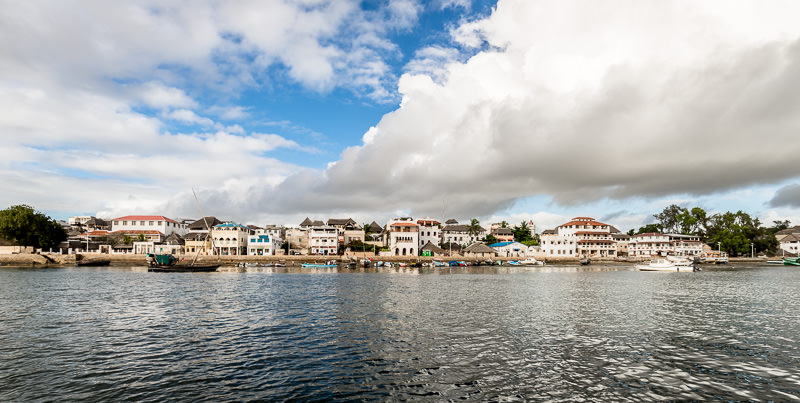
Lamu Town’s pretty waterfront.
What’s to do in Lamu?
Well, realistically, Lamu is not a place heavy on “must see” sights. Sure, there’s an old 19th century fort, a couple of small museums and a beach, but none of them really demands a lot of your time – being in Lamu is just about being in Lamu – enjoying the unique atmosphere, centuries-old buildings and narrow streets. It’s a great place to relax and let a few days go by. It was where I recharged a bit after undertaking big activities like safari game drives in the Maasai Mara and climbing Mount Kenya.
Sadly, in recent years, reports of extremist violence in Lamu County, which encompasses Lamu Island (and thus Lamu Town), have scared a noteworthy amount of tourism away (examples of recent violence include this, this, this, this, this – more than I wish existed) – but to my knowledge, no violent terror attacks have actually occurred on Lamu Island itself, and rather, in towns along the mainland roads in Lamu County.
By this logic, the island is still basically a safe place to visit. During my time there, I didn’t find the mood in Lamu Town to be elevated or anxious. Yes, I will say that there are frequent security checkpoints and a lot of police/military personnel on the mainland roads to Lamu Island, near the conflicted areas – but I didn’t see this type of activity on the island itself. Best way to avoid the conflicted areas, should they make you nervous? Fly in and out of Lamu Island’s airport (airport code LAU, also known as “Manda Airport”). This takes you pretty much directly to Lamu Island – you never have to set foot in mainland Lamu County at all. I believe flights are available from Nairobi, Mombasa and Malindi – and they’re much, much faster than taking the bumpy bus ride in or out. I did it both ways – flew in, and took a minibus out. I would fly both ways if I did it again, no question – for safety, convenience, comfort and time savings. Easy choice.
Ok, now that we’ve got that out of the way, let’s keep talking about why I actually really LIKE Lamu Town and Lamu Island, because I do. It really is a special place.
I visited Lamu for five days in November 2015.
Arrival in Lamu
I flew from Nairobi to Lamu Island via discount carrier JamboJet (around $50 US and DAYS shorter than taking the bus to Mombasa and then up to Lamu), and had a similar greeting as I’ve found in so many places in the world – I was immediately followed by local boat men and touts who simply would NOT give up on trying to get me to stay in the hotel they recommended, or to hire their boat for a tour. Like you learn to do in these situations, I told them I already had booked a place to stay (though I of course had not) and proceeded to muddle my way through the town’s confusing alleyways to what would be my lodgings – a clean, lovely and well-run place called JamboHouse (recommended – and no relation to the aforementioned airline).
Lamu Town quickly became one of my favorite places in Kenya. Its narrow alleyways, near total lack of motorized transport (replaced by hand carts and hardworking donkeys), friendly people and overall compactness of form made me feel quite at home there – moreso with each passing day. Accordingly, I’d recommend scheduling no less than three days there if you have it in your itinerary. I quite liked spending five days there myself!
By about my third day in Lamu, I was able to finally shake my persistent touts that were still trying to get me to hire a boat or a tour or what not – and losing my tail helped ensure a bit quieter, more personal experience in the town. I started having pleasant conversations with locals in the street. I ate at the same small restaurants two or three times and started feeling comfortable ordering without a menu. Nice things like that. This was when things got really nice, and when I started to understand why some people extend their time in Lamu Town beyond days and into weeks, without regret.
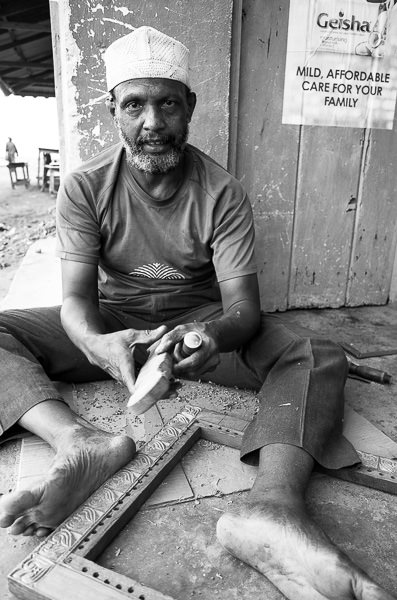
One of my the friendliest people I met in Lamu Town, Kenya – Hassan carves patterns into furniture by hand with a chisel. This will be a rocking chair.
One of my favorite things about Lamu is that you can pretty walk go anywhere in the city, any time of day. Don’t try that in Nairobi unless you really know what you’re doing – and I don’t say this to fear-monger – but it’s just that walking in certain parts of Nairobi after dark guarantee what a friend called “a 100% chance of getting robbed” (go on, send me hate mail for saying this), and chances are that you don’t know which parts those are if you’re just passing through and don’t know anyone. In Lamu Town this type of thing just isn’t likely. The town is so small anyway that it’d probably be difficult to get away with an attack or robbery without other locals finding out about it and pointing out the perp.
There’s also a nice beach nearby, though not immediately in Lamu Town itself. A long walk (30-45 min?) or short boat ride down the coast brings you to a small town named Shela. Walk just beyond Shela and you’ll find yourself on a wide, sandy beach where green sea turtles hatch from time to time thanks to efforts by local conservationists. Sunset is nice really quite nice here – but it’s recommended to hire a boat for transit back to Lamu Town after dark to ensure your safety (I know this flies in the face of my previous comments about total night time safety, but this is literally the only potentially unsafe place I heard of on the island so WHATEVER.).
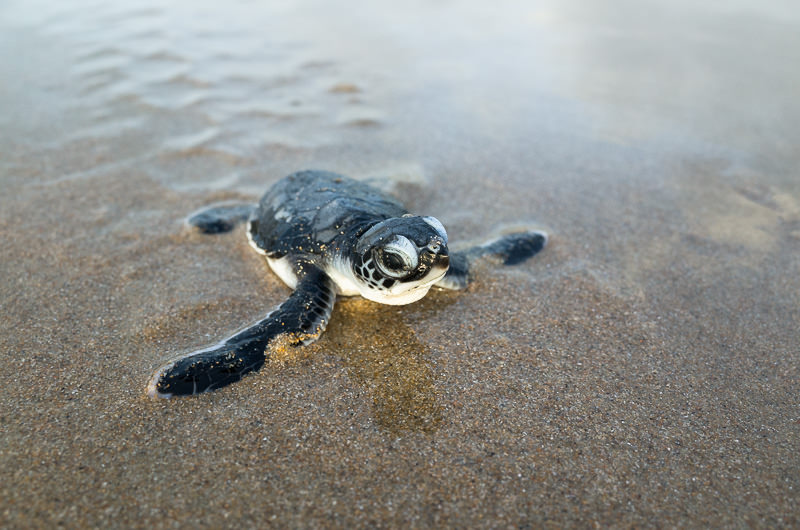
A fresh born green sea turtle in the town of Shela – a small town that’s a relatively long walk or short boat ride up the beach from Lamu Town.
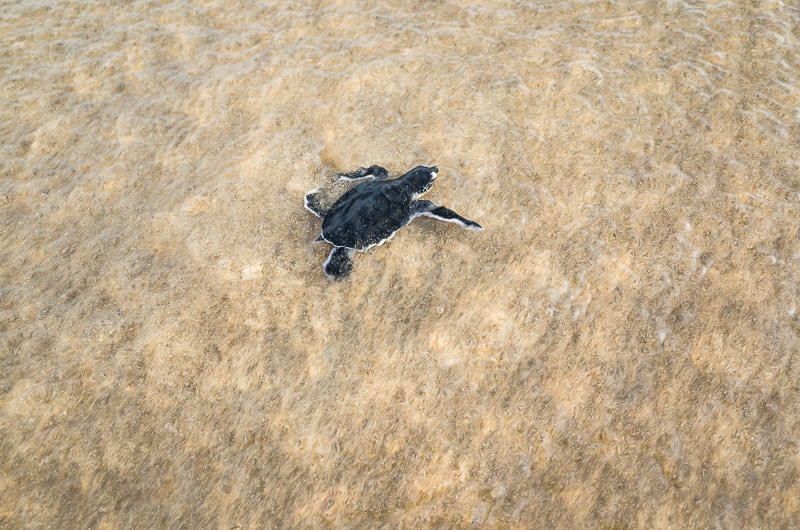
The same sea turtle swims away for the first time as if it was an everyday activity. Instinctive and proficient.
Electricity on the island comes from an array of incredibly loud diesel generator stations – and when I visited in November 2015, only a couple of these generators were functional and power cuts were an everyday thing. I could never really guess which part of town would get the power cut, as it seems that some businesses were on one circuit, and others, a separate circuit. Some evenings I’d return to my room and the power would be out. And then in the middle of the night, suddenly my room’s lights and fan would kick on again when power was restored. Off and on. The remedy for all of this? Carry a head torch at all times, and don’t expect your favorite restaurant to have electricity every time you get hungry. Be flexible. And charge your camera batteries when the power’s on!
It’s not expensive to visit Lamu. I spent about about US $30 on basic living expenses (around US $13/day low-season lodging + food costs) while there. A nearly full-day dhow (basically, a Swahili sailboat) trip that included a really fantastic (included) lunch of fresh fish only set me back about US $30 by itself, making my most expensive day in Lamu reach about US $55 in expenditures. This might sound like a lot to some mega-shoestring backpackers but it’s really not bad for east Africa at all.
Dhow tours are definitely optional but certainly recommended. I often hate things like guided tours or tourist “must-dos” but I really loved my day on the dhow, thanks to the fantastic team that ran the boat tour and my friendly fellow travelers on board (who became my walkabout friends for the remainder of my time in Lamu). We spend the better part of a full day sailing, snorkeling, eating lunch aboard the boat, and visiting a small island. It was really great.
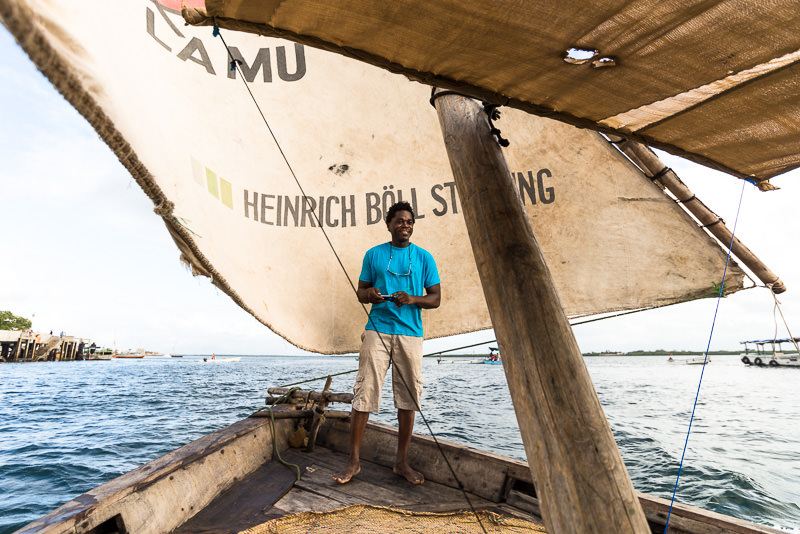
The flag of a dhow I spent the day on featured the name of Germany’s green party – Heinrich Böll-Stiftung. An unexpected political aspect of what was otherwise a day of lazy boating and enjoyment. Our captain (pictured) was named Baji – I highly recommend hiring him and his boat while you’re there. You can likely find and book him through JamboHouse.
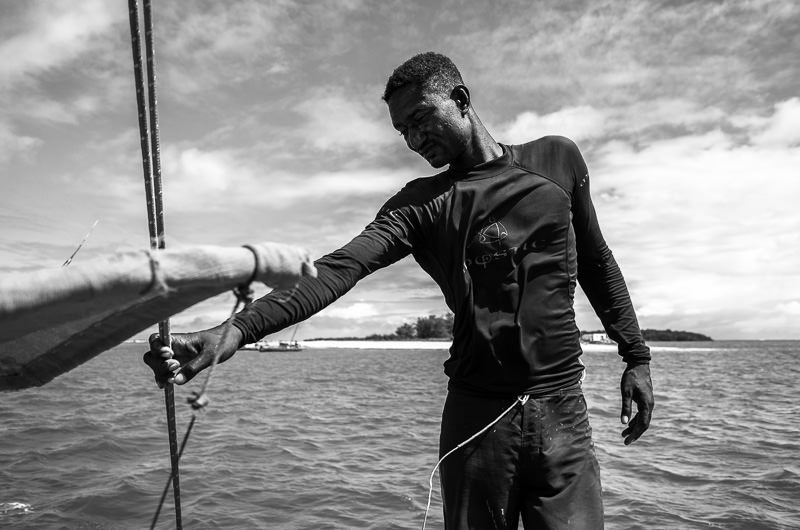
Our spear fisherman feels the breeze and sun on the dhow. He had worked with American soldiers in recent months and had accordingly become a fan of the word “motherfucker”, which he used liberally in his humor.
I found Lamu to be really enjoyable to photograph. There’s something truly lovely about the combination of the waterfront, the old narrow alleys, the ornate Swahili wood carvings that adorn local doors and edifices, the mixed architectural influences due to Lamu’s historic role as a trading port serving multiple cultures (some of which attacked and/or conquered the island), and the Muslim women and men of Lamu Town walking the streets in traditional clothing.
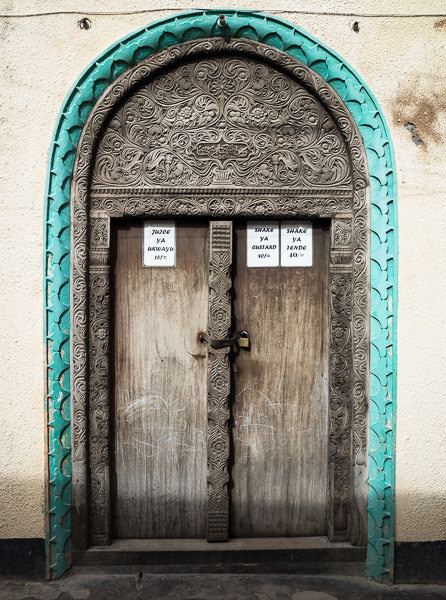
SHAKE YA CUSTARD – but watch yourself. Beautiful, ornately carved Swahili doors are scattered throughout Lamu Town.
A Note on Street Photography
A common traveler conversation (anywhere in the world, really) is the question of if one should ask potential human subjects for permission to photograph them, or if one should proceed to take photos without asking.
Me? I shoot some of my candids and street photos without permission, and some with. Some, I get verbal or nonverbal permission for after hitting the shutter.
Here’s why: if you ask for permission for every photo of a person, you will only get posed photos. I often prefer candids, because I think they capture truths (given, maybe subjective truths) of a moment much better than alerting and then photographing what so often becomes a very nervously posed subject. So I cannot ask for permission for every photo I take, or half the photos on this post simply would not exist.
Fun story: when I shot this picture of the kids below, I hit the shutter, smiled, and showed them the picture, because often times kids think that’s fun. Months later, I posted the below picture to Instagram, and amazingly, within days, a woman commented “nice photo this [sic] are my kids” on the photo. I replied “You have cool kids!” to which she said “thanks asante” (“asante” is thanks in Swahili). I guess when I hashtagged the photo #LamuTown I was probably only hitting a fairly small demographic, so it adds up in some kind of strange cosmic way. Fun to connect like that!

hangouts. I posted this on photo on Instagram and within days, a woman commented “those are my kids!” I wouldn’t be surprised if other pictured Lamu residents find this post. If they do – hello! I love your island!
Ok, enough talk – here’s the rest of my favorite photos from my time in Lamu:

Abdul is a great city guide – take his walking tour early in your visit to get a feel for Lamu Town and its history.

Frenzied moves toward goal – boys play an intense game of soccer/futbol in a dirt lot with a flattened ball.
Thanks for reading.
If you’re planning a trip to Kenya (or even just dreaming about one), make sure to check out my other posts about things like getting a Kenyan tourist visa, doing a safari on the cheap, and climbing Mount Kenya.
All photos on this post were shot on a Nikon D610 full-frame DSLR and Ricoh GR compact camera. See my photo gear list for travel for more info about what I shoot on currently.

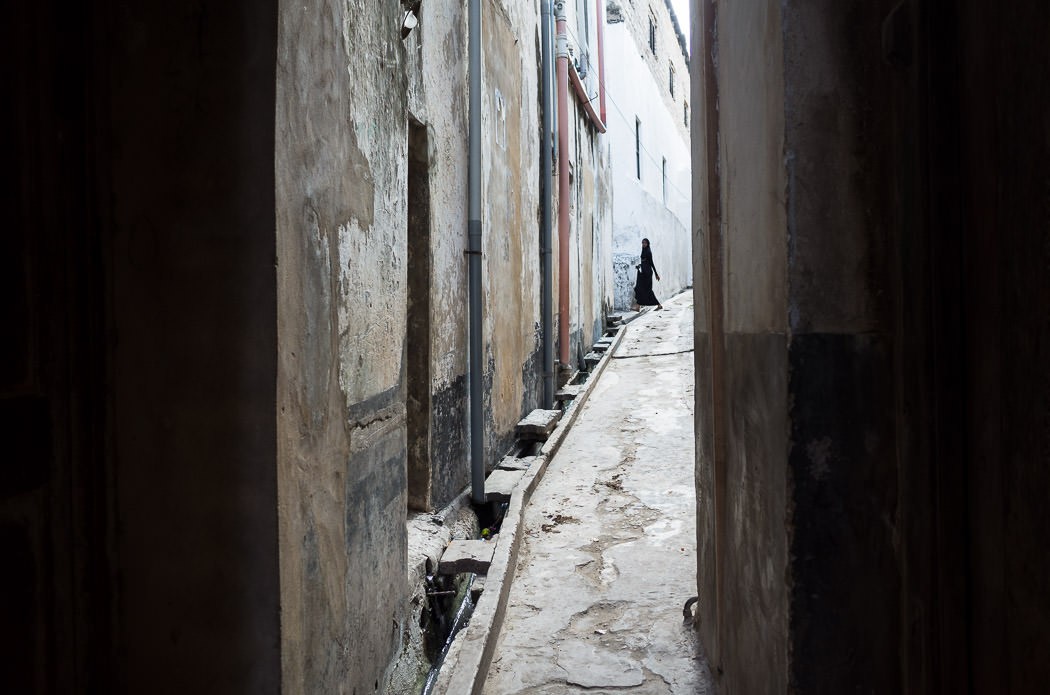
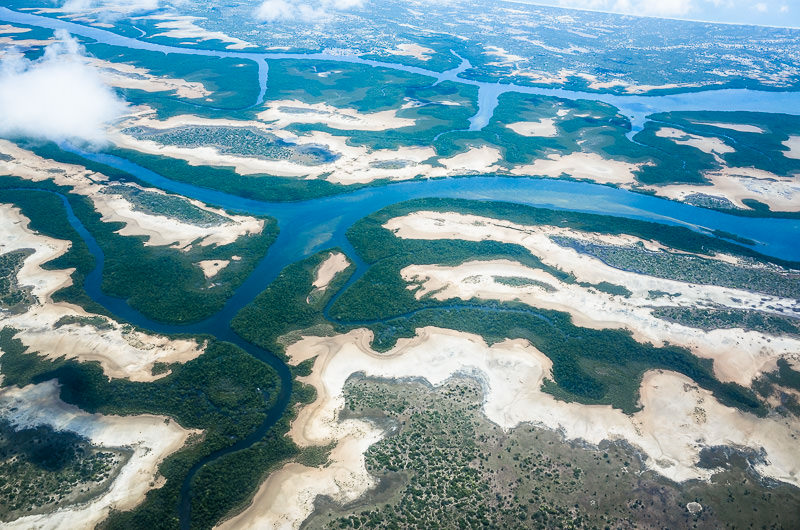
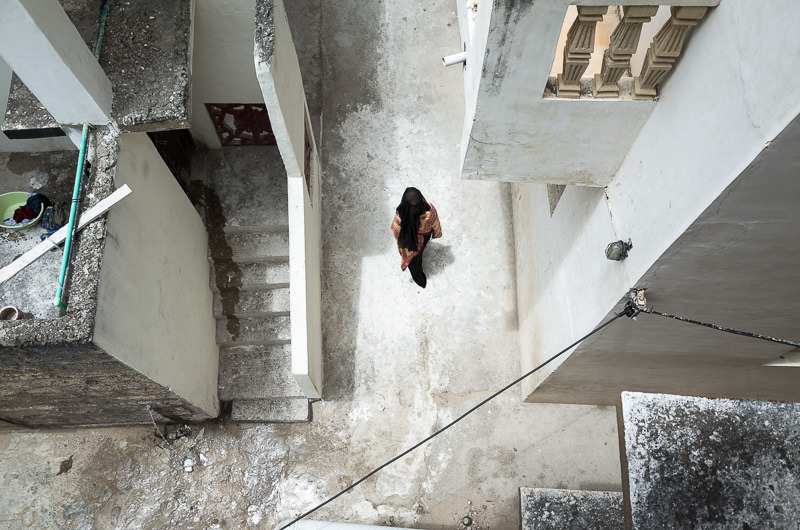
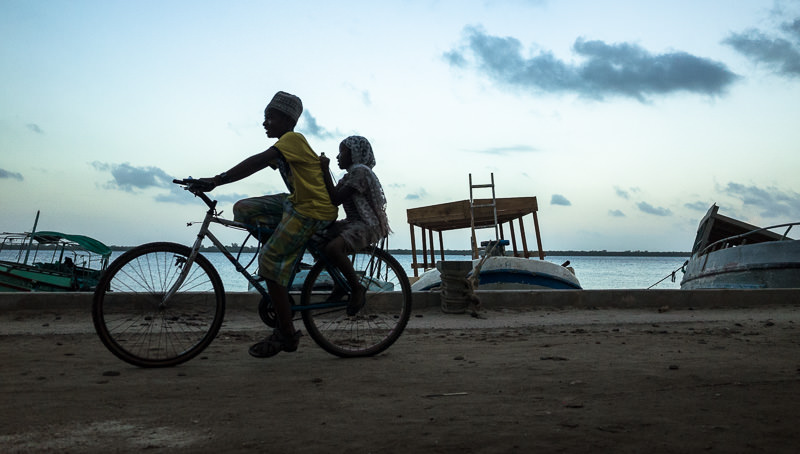
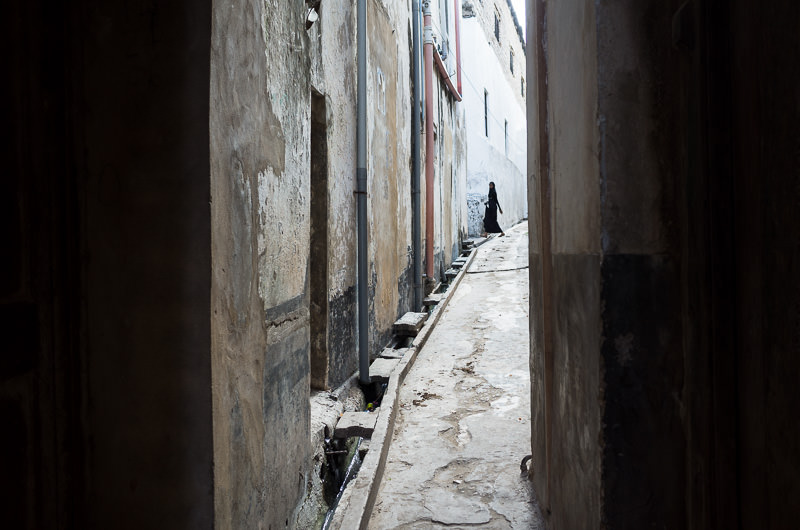
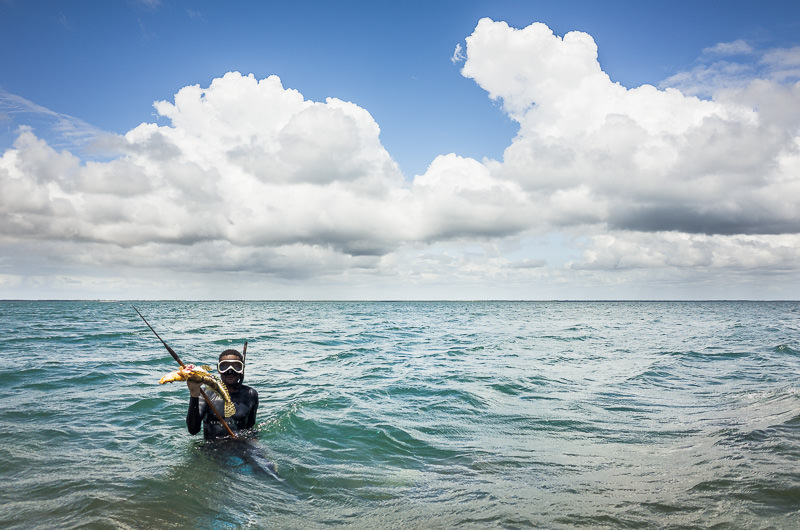
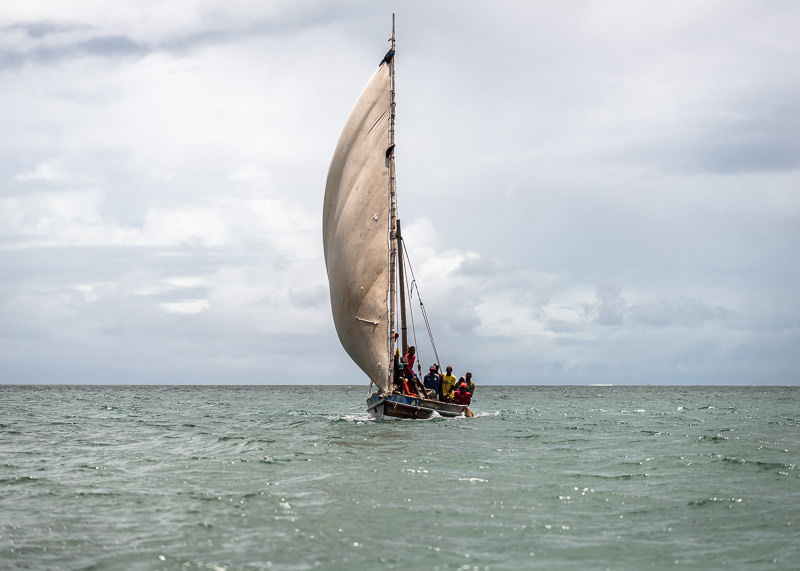
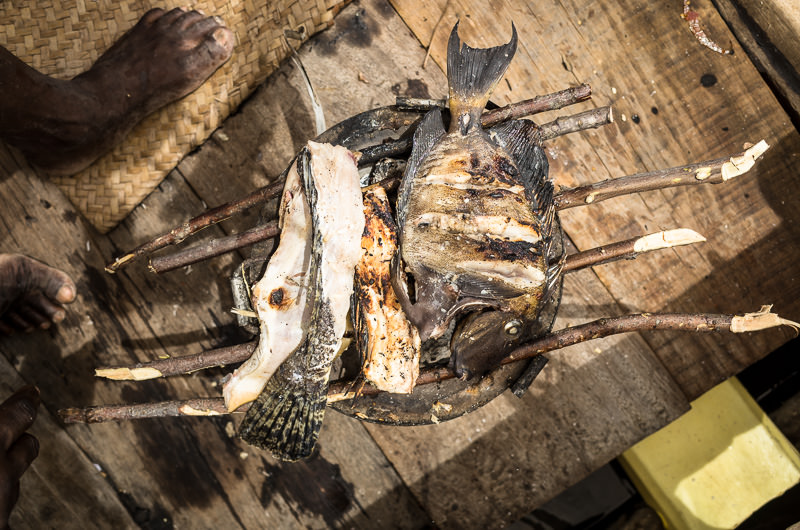

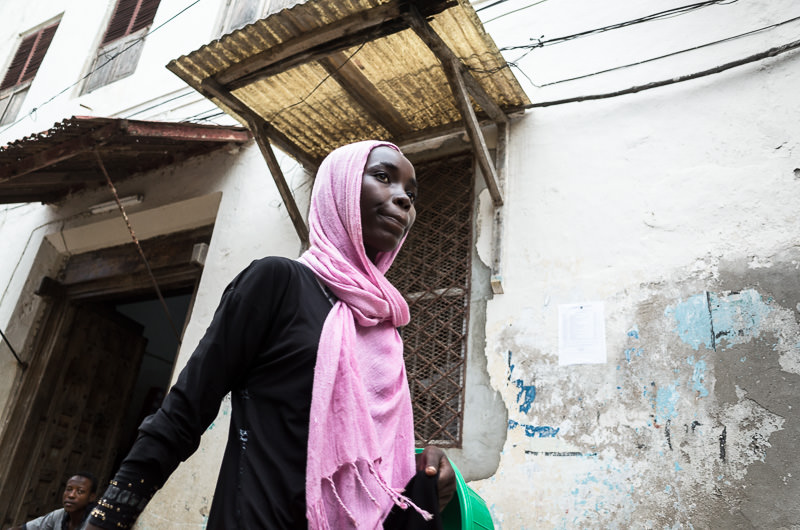
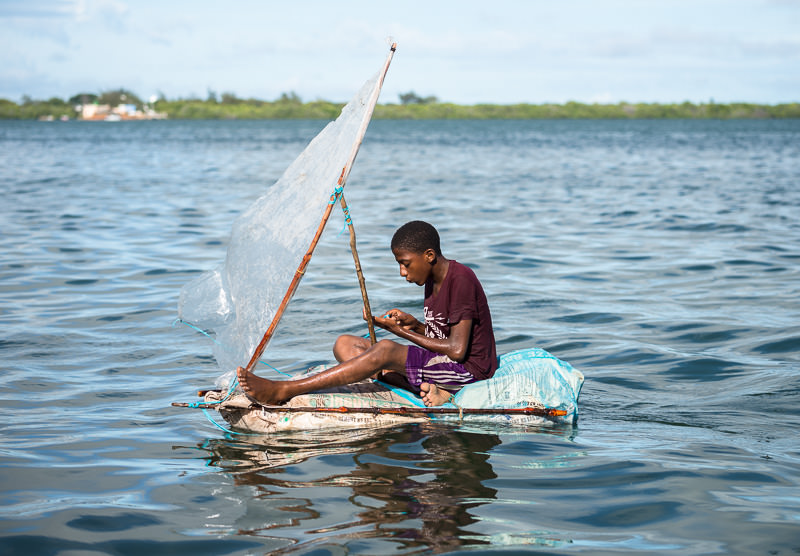
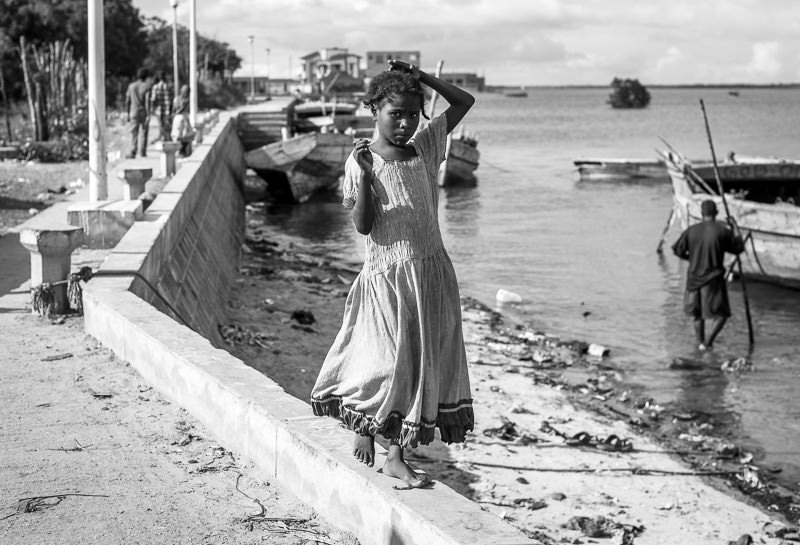

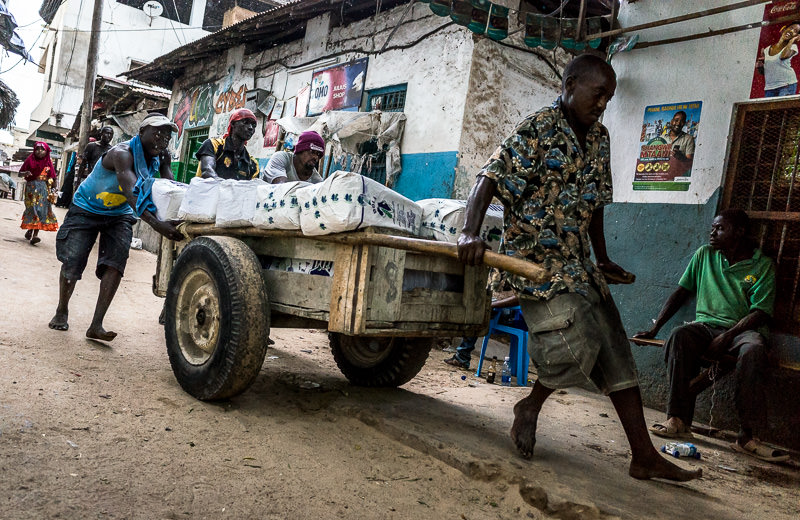
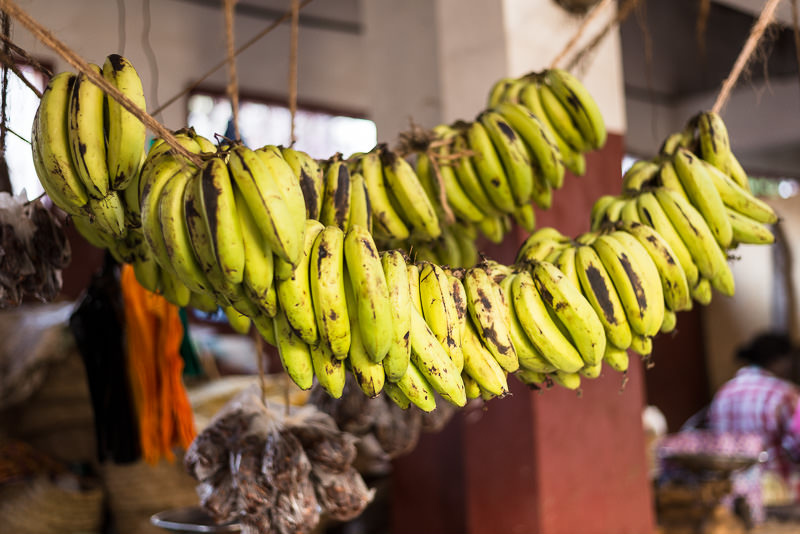
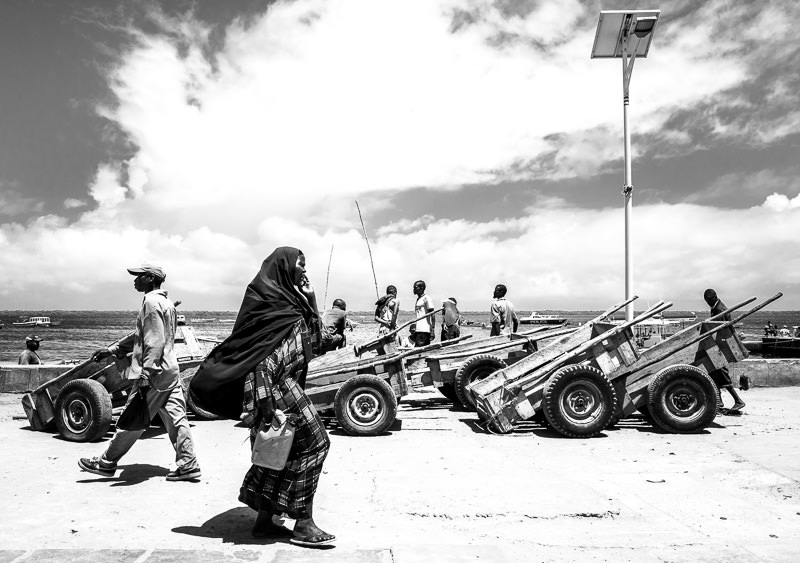
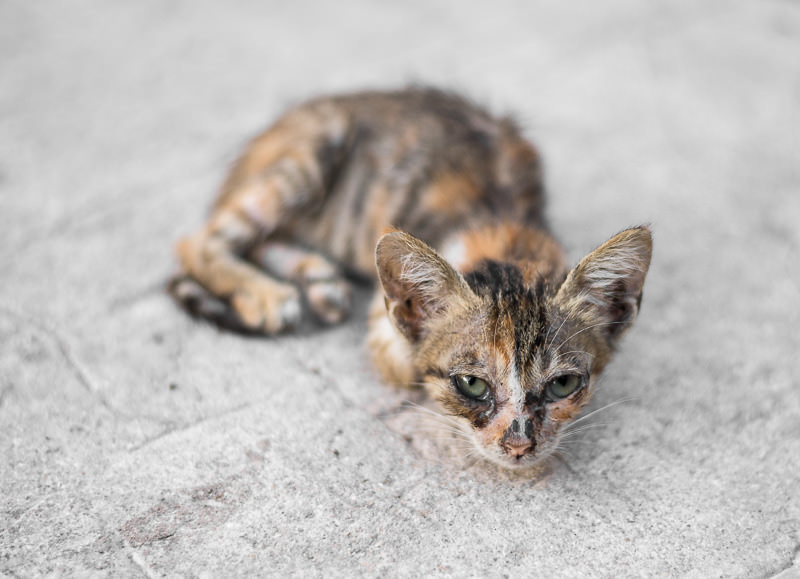
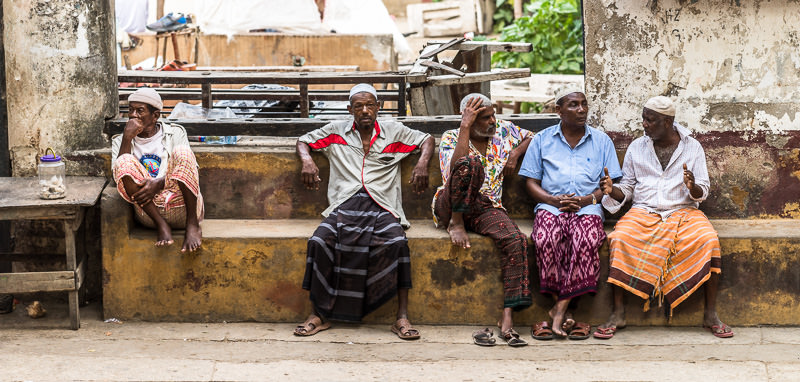
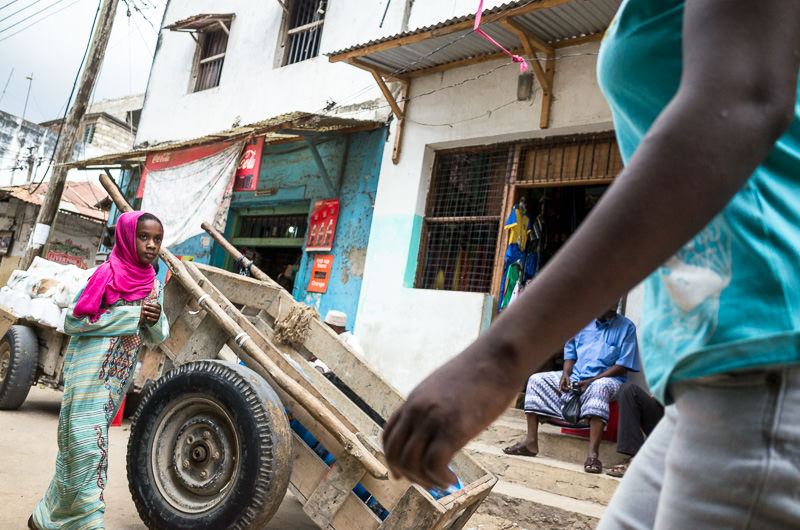
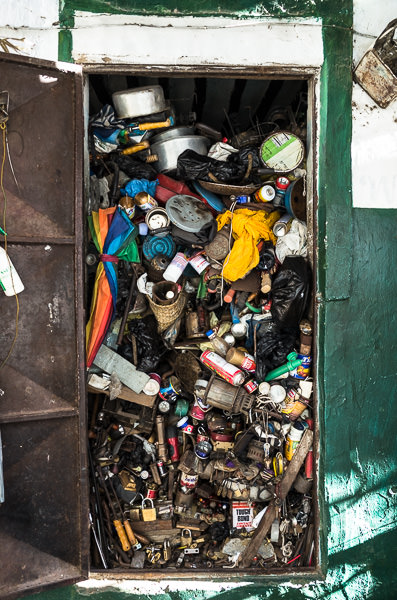
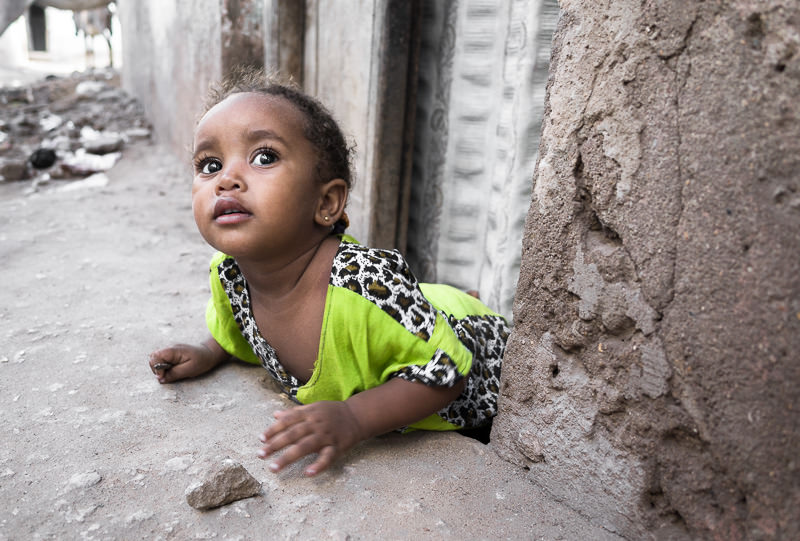

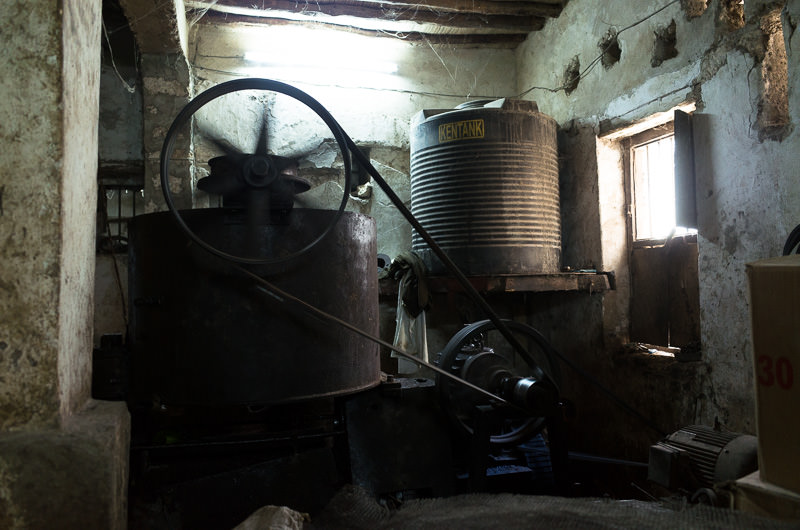



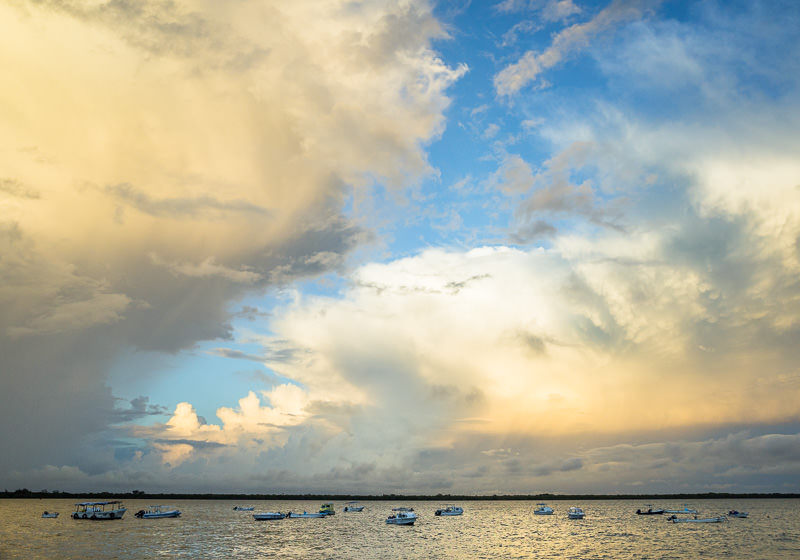

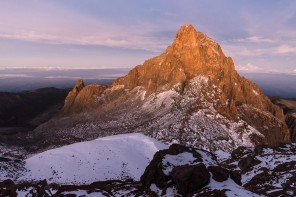
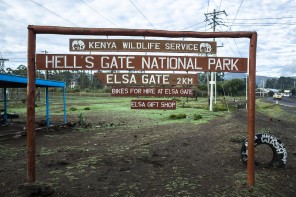

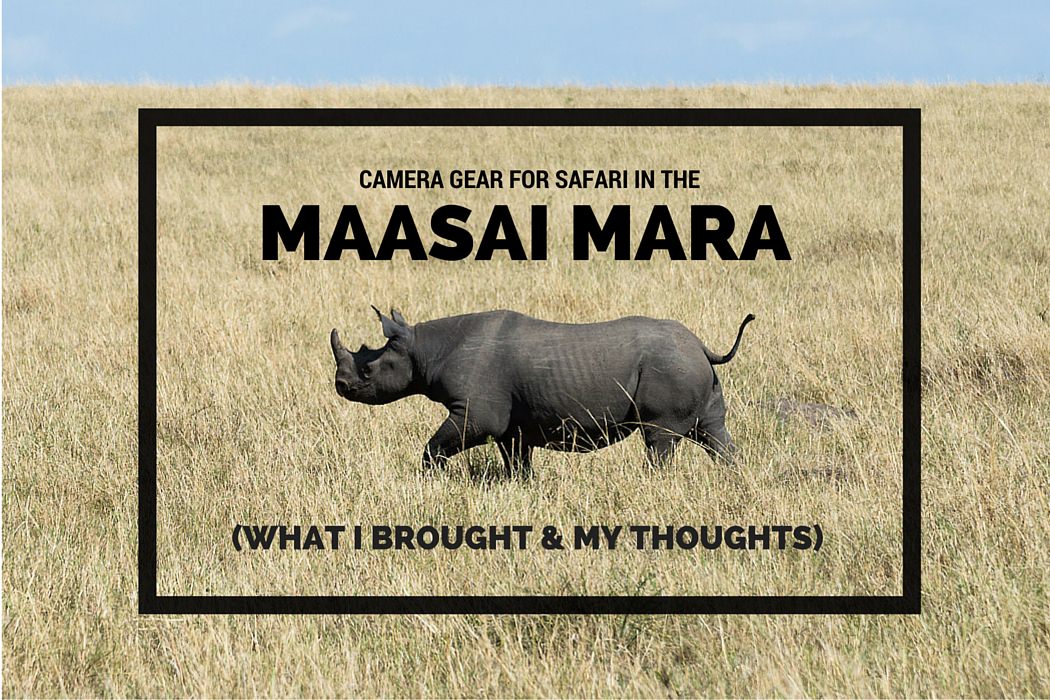

Bravo! I think i will add Lamu to my list in this trip… I totally agree with your explanation about streetphotography, I do and think exactly the same. By the way, very cool thing that they found the pic in instagram… i know that feeling as it happened to me recently with some pics of Nicaragua
Hey Juan, thanks for dropping by. I think Lamu is worth a visit for sure. You may consider flying in and out of Lamu’s airport if the bus rides through all the police/military checkpoints weird you out at all though. Flying is a good time saver too!